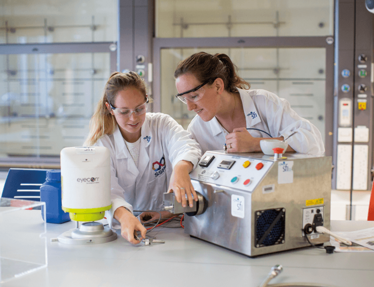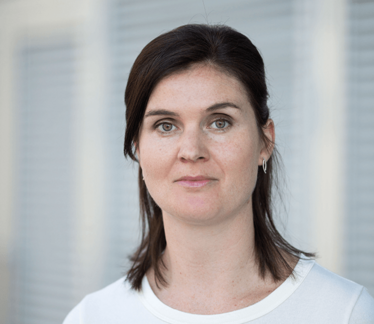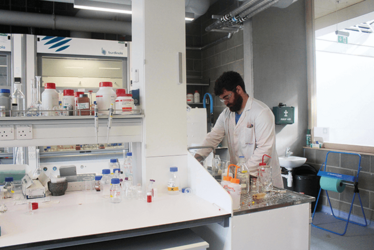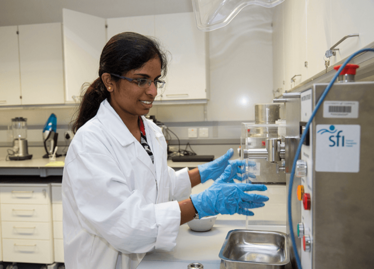Small But Not Forgotten
Is innovation in small-molecule drugs dead? Certainly not – large molecules may grab the bulk of industry headlines, but small-molecule drugs are still pulling their weight. Ongoing research into improving small-molecule manufacturing is just as relevant in the age of biopharma.

In the June issue of The Medicine Maker, we spoke to experts from Ireland’s National Institute for Bioprocessing Research and Training (NIBRT). NIBRT focuses on biopharma manufacturing and is involved in a number of ongoing research projects to enhance cell yields and manufacturing efficiencies, but what about small-molecule drugs? There are still many challenges in small-molecule drug manufacture, as well as increasing pressure for companies to use more environmentally friendly chemistries in small-molecule synthesis.
Ireland is not just investing in biopharmaceuticals; the country is also home to the Synthesis and Solid State Pharmaceutical Centre (SSPC), which is based at the University of Limerick. Like NIBRT, SSPC has a focus on drug manufacturing. And although the center also covers biopharmaceuticals, the bulk of its research focuses on small molecules, including synthesis, material isolation and formulation of the final medicine. We speak with Jon O’Halloran, general manager, and Joanne Conroy, industry liaison officer, at SSPC to find out how the center was formed and what small-molecule active drug challenges still plague manufacturers.
What is the story behind SSPC?
Jon O’Halloran: To speak about SSPC, we first have to go back to before SSPC was officially formed. It started with a research collaboration in 2004 between the University of Limerick and a local company that produces alumina from bauxite ore. It is located very close to the University of Limerick, which is where SSPC is hosted today. The company wanted to continuously produce aluminum from bauxite ore in the most efficient, cost-effective manner possible, so they approached a couple of researchers from the university: Kieran Hodnett whose background lies in physical property science, and Patrick Frawley, who specializes in modeling. The project was successful – the team managed to obtain European funding and redesign the alumina refining process. Today, the plant is one of the most efficient in the world at producing alumina – and it was a very important development for the site, which at the time was under a lot of cost pressures. It continues to thrive to this day.
After the completion of the project, Mary Shire who worked in the university’s technology transfer office – and had previously worked in the pharma industry – was inspired. After seeing the success with alumina process (which involves the crystallization of fine chemicals), she realized there were similar chemistry challenges in the pharmaceutical industry, such as the crystallization of active pharmaceutical ingredients (APIs). Perhaps the researchers’ work on the fundamentals of crystallization could be put to even greater use.
The researchers, together with Hodnett (who is the scientific director of SSPC today) and Shire, approached the pharma industry, via their trade association, Pharma Chemical Ireland. The idea was pitched to 10 companies, who liked what they heard. Hodnett then began reaching out to other academics in the space, including Brian Glennon at University College Dublin, who specializes in pharmaceutical engineering; Anita Maguire (organic chemistry) at University College Cork; Pat McArdle (analytical science) at the National University of Ireland; and Anne-Marie Healy (pharmaceutics and pharmaceutical technology) at Trinity College Dublin’s School of Pharmacy and Pharmaceutical Sciences. Once the team was together, things began to take shape. The pharma companies engaged with the research team and the research office of the University of Limerick, and funding of almost 7 million Euros was sourced from Science Foundation Ireland (SFI) for 2008 to 2012 to create a Solid State Pharmaceutical Cluster.
During this time, the cluster concentrated on helping companies to demystify the black box of pharmaceutical crystallization. It was a huge success – to the point where Irish manufacturing affiliates of multinational pharma companies were now exporting crystallization solutions to their sister manufacturing sites overseas. Prior to SSPC, these sites would have been exporting problems to corporate R&D in this space. The industry in Ireland had come a long way in just 4 and a half years of SSPC.
By 2012, we were at the end of our funding and we asked our pharma partners what they thought should happen next. In the end, we were able to obtain further funding through SFI – and from the pharma companies themselves – to the tune of over 40 million Euros, which will last until 2019. The Synthesis and SSPC was formally launched at this time and its activities go beyond crystallization. We look at upstream chemistry and downstream formulation activities, as well as having activity in the biopharmaceuticals space. We have 24 industry partners and we’ve expanded the number of research institutes that we work with to nine, which includes NIBRT.
I think our greatest achievement to date has been facilitating multi-partner (both academia and industry) collaboration in the precompetitive space. Traditionally, problems would be solved in house, or perhaps companies would work with just one academic partner. This is one of the first times that multiple companies and research partners have come together to solve pharmaceutical manufacturing challenges.

Jon O'Halloran

Joanne Conroy
How did you get involved with SSPC?
JOH: I’ve spent 20 years in the pharma industry, predominately in API manufacturing roles. I started out as a process development chemist, but later I moved into manufacturing and on to senior management roles in production and business development. I had wanted to further my career and education – and in 2008 the SSPC role was advertised and was ideal for both. I was also attracted by the research question that SSPC wanted to address. In my time in industry, I felt that some of the problems we were trying to solve weren’t best understood with the knowledge we had. I was very keen to understand more about the fundamentals of crystallization.
Joanne Conroy: I’m quite new to SSPC – I’ve only been here for four months – but I have worked in the pharma industry for 10 years as an organic chemist. I started my career in medicinal chemistry working for Novartis in Basel, but I’ve spent most of my time in the industry at the later stage of drug development in product development with GlaxoSmithKline’s second generation team. I also worked for a number of years in manufacturing at GSK’s Cork site in Ireland. Today, I’m the industry liaison officer at SSPC. It’s very different to working in the industry and it’s taken me a while to stop saying “we” as in “we at GSK”! I’m still very much connected with the industry though – we need to make sure they have a steer on our projects to ensure that our work is relevant.
Biopharma grabs most of the industry’s limelight – are small molecules overlooked?
JOH: Biopharmaceuticals are certainly the emerging and growth area within the sector, and certainly significant when it comes to sales. However sales are determined by price, as well as unit volume, and biopharmaceuticals are quite expensive. Manufacturing a large molecule product is generally more complicated and expensive than manufacturing a small molecule product. Both are very important however – and will continue to be so going forward, with most companies estimating an even distribution of small and large molecules in the future.
Looking at small-molecule APIs, in all honesty I don’t think that the sector has changed to the same degree as most others in the past 50 years. We are still talking about tablets and capsules (and will continue to do so in the future) and most companies still manufacture in batch mode. If you look at any other sector globally, you’ll see that most process industries manufacture continuously. The pharma industry has been very slow to get moving in this area, although serious initiatives around continuous manufacturing are now starting to be realized; SSPC is very active in this drive.


I believe there is a sea of change coming. We have all heard of the “patent cliff” and we know that there are smaller numbers of blockbuster drugs. There is also a shift towards more niche products, particularly high potency, lower dosage small molecules, which create new challenges in terms of manufacturing as many small-molecule drug manufacturing operations are built to produce a large tonnage of API.
JC: Both novel technology and novel chemistry are needed to manufacture APIs more cost effectively. Many innovator small-molecule drug manufacturers must compete with generics. The patents on many innovator drugs have expired, but many patients are still prescribed the branded product. To ensure that this continues to happen, innovator companies need to make sure their drugs are cost effective. And costs can be reduced through chemistry.
In particular, green chemistry is seeing a lot of attention as companies look to reduce their carbon footprint (many have very aggressive targets in mind). Biocatalysis is one way to achieve this since it involves carrying out mild reactions using an enzyme as a catalyst. A lot of these reactions can be carried out in water, which eliminates the use of toxic and highly flammable solvents.
A significant number of APIs are single enantiomers and many of the synthetic routes to these drug substances will involve a chiral resolution, which is extremely wasteful as the undesired enantiomer is an unwanted byproduct that has to be removed. If the chemistry can be designed so that you make the desired enantiomer from first intent, either using an enzyme or another asymmetric catalyst, then you can create a much greener and more atom efficient process. Another area of interest in designing organic synthesis is C-H activation reactions. Most organic chemistry reactions involve new carbon-carbon bond-forming reactions; there is a lot of work being done to ensure this process is efficient.
Irish Talent and Innovation
According to Joanne Conroy, Ireland is the eighth largest producer and the fifth largest exporter of pharmaceuticals globally. In addition, 9 of the top 10 pharma companies have a presence in Ireland. If you’re interested in the Irish pharma industry, you can read more on The Medicine Maker website:
Sustaining the Biopharma Boom, by Killian O’Driscoll, NIBRT
Finger on the Biopharma Pulse, with John Milne, NIBRT
Know Your Process, Know Your Product, by Jonathan Bones, NIBRT
How does SSPC work with NIBRT?
JOH: Around 90 percent of our research is in small molecules, but many of the companies we work with deal with both small and large molecules – and they don’t want us to forget about the large molecules. Recently, we’ve been working with NIBRT in the area of disposable technologies. Disposable, single-use systems have been a real conundrum for the industry in terms of extractables and leachables, and how these can affect large molecules. With industry and in collaboration with NIBRT, we have funded a project through SFI with a view to determining the properties of disposable technologies that are most critical. We hope to engage in further research with NIBRT in the future too.
What research have you been focusing on at SSPC?
JOH: Outside of our biopharma research, we have three strands of research. Strand 1 focuses on research concerning the making of the molecule, such as chemistry, biocatalysts, green chemistry, telescoping reactions and so on. Strand 2 looks at producing materials, with a focus on crystal growth and design, and Strand 3 looks at drug product formulation and manufacture. Looking at the trends in Strands 2 and 3, solubility is a big issue. There is a common statement used in the industry: for every one drug that makes it to market, 10,000 fail. One of the reasons for these failures is poor solubility. A lot of the work we do in Strands 2 and 3 aims to help poorly soluble compounds become more promising. We do a lot of work with nanoscale materials; if you can make materials of a sufficient nano scale they can be much more soluble and as a result lead to greater bioavailability. However, it is challenging to retain the nanoscale through manufacturing. We also work to realize the medicines of the future, such as multicomponent systems and cocrystals. In the area of drug delivery, we look at how to deliver poorly soluble drugs by use of techniques like spray drying and hot-melt extrusion.
JC: In strand 1, we are doing some very interesting work on flow chemistry and continuous manufacturing – this is a topic (and a challenge) that brings a lot of companies together. Replacing traditional batch conditions with flow chemistry allows synthetic routes that would have previously been rejected by pharmaceutical manufacturers due to safety and operability concerns to now be revisited. Companies are looking for continuous platforms – and they have been leaning on SSPC in this area. I don’t think the plant of the future will be using 10,000 liter vessels; manufacture is more likely to depend on a process that can take place at lab scale – perhaps producing tens of kilos per hour or day. This can satisfy the market where dosages are quite small and potencies high.
How keen is the industry to embrace continuous manufacturing?
JOH: In an industry that is traditionally seen as conservative, there can be a resistance in pharma in being the first to do something new, especially when novel manufacturing techniques can be viewed as disruptive. It can also be expensive to go it alone with potentially high-risk novel new processes. Now that some companies have switched to continuous, more are following. Vertex in the US was the first to have a continuous process approved for a new drug in July 2015, and since then there have been developments at other companies. In April, Janssen made the switch from batch to continuous for an already marketed drug, which was a big step. But these developments mostly revolve around the drug product.
In terms of the API, SSPC and companies are working to advance the area of flow chemistry, but there are quite a few knowledge gaps in the API workup space and we’re receiving a lot of interest in terms of continuous crystallization and drying. We recently received a 2.4 million Euro grant from SFI to build a testbed in this area for industry and researchers to develop together.
There are also regulatory challenges for the sector in the area of adoption of continuous processing. Next year, we’re organizing a continuous manufacturing workshop in Dublin with the FDA and EMA to discuss the challenges associated with implementing continuous manufacturing in more detail.
Overall, I’m very positive about the area. Slowly, the conversations are moving and there is a realization that it’s not a question of “if”, but “when” the pharma industry will move to continuous. However, I’d like to see the industry be more open to change. There are a lot of promising advances on the horizon; for example, we are all hearing about stratified and personalized medicines, convergence with medical devices , and treating the societal needs of the future with ageing populations and ambient assisted living. The sector needs to be open to change and, indeed, embrace it. The time is ripe for disruptive technologies and new processes – and at SSPC it is exciting to be helping to deliver that change.



















